1976 Penny Coin Value: How Much Is It Worth?
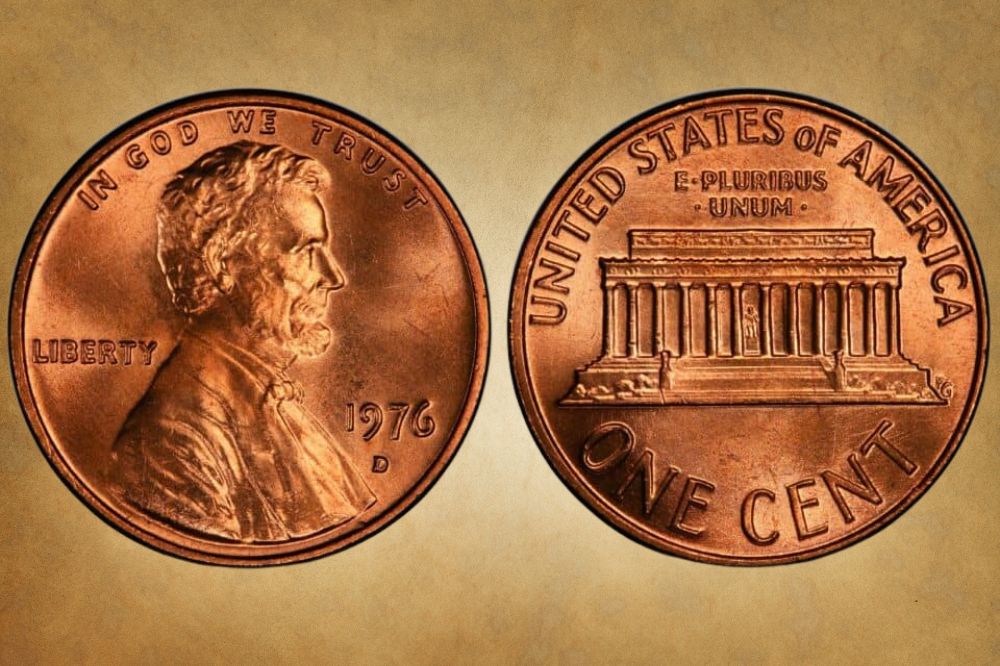
In 1976, 25c, 50c, and $1 denominations released Bicentennial Coins to celebrate the 200th Anniversary of Independence from the British Empire. These Bicentennial Coins had two dates – 1776 to 1976. But pennies are different because the Lincoln Bicentennial came later.
In 2009, Lincoln Bicentennial Cents were coined with four special reverse designs, but that’s a whole other story. For now, let’s focus on the 1976 Penny Value, one of the two 1976 coins that had a single mint date. It was coined in four of the US Mints, so let’s evaluate this penny.
1976 Penny Value Chart |
||||||
| Mint Mark | Mint State (MS 65) | Mint State (MS 66) | Mint State (MS 67) | Mint State (MS 67+) | Mint State (MS 68) | Proof (PR / PF 69) |
| 1976 No Mint Mark Penny Value | $7 | $12.50 | $80 | $250 | $4,000 | No (P) or (W) Proofs |
| 1976-S Proof Penny Value | N/A | N/A | N/A | N/A | N/A | $1,208 |
| 1976-D Penny Value | $7 | $40 | $450 | $1,000 | N/A | No D Proofs |
1976 Penny Value Guide
We’ve already mentioned the difference between the American Bicentennial (1976) and the Lincoln Bicentennial (2009). It’s the reason why 1976 Pennies aren’t counted as part of the 1776 – 1976 Bicentennial Series. But the 1976 Penny still attracted interest. In general, 1-cent coins are graded as RD (red), BN (brown), or RBN (reddish-brown), with RD as the best set.
1976 No Mint Mark Penny Value
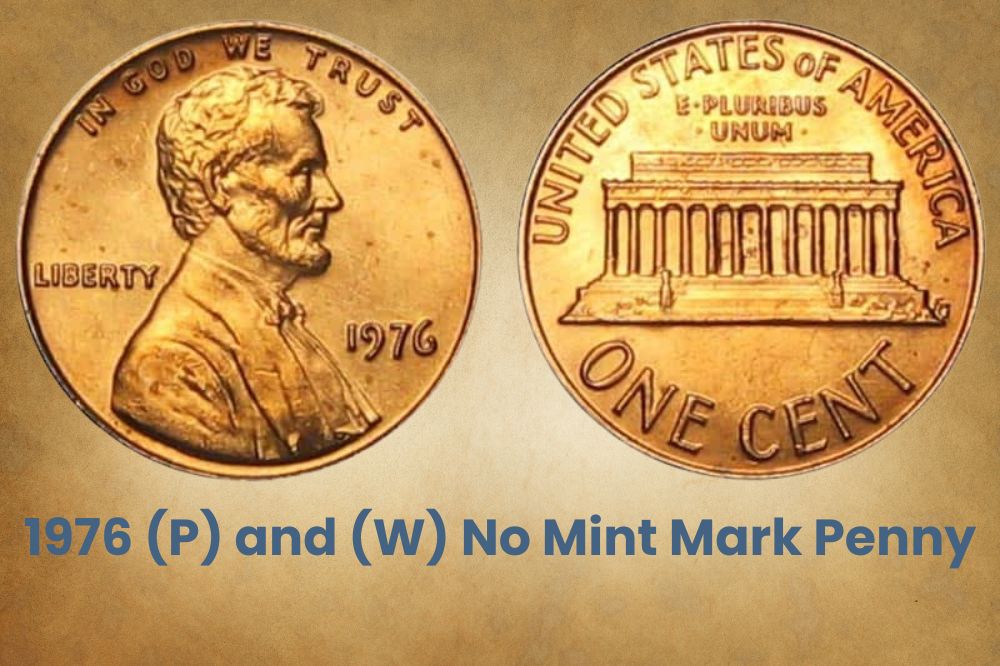
In 1976, two mints released coins without mint marks. These were Philadelphia and West Point, making 4,674,292,426 pennies in total. As an ordinary citizen, you can’t tell them apart, but Treasury Department records show the Philadelphia Mint made 3,133,580,000.
The West Point Mint made 1,540,695,000. Notably, West Point coined pennies from 1974 to 1986, and none had mint marks, though 2019 Pennies have the W mint mark. The highest known grade for no-mint-mark pennies is the 1976 MS 68 RD Penny. It once sold for $3,760.
1976-S Proof Penny Value
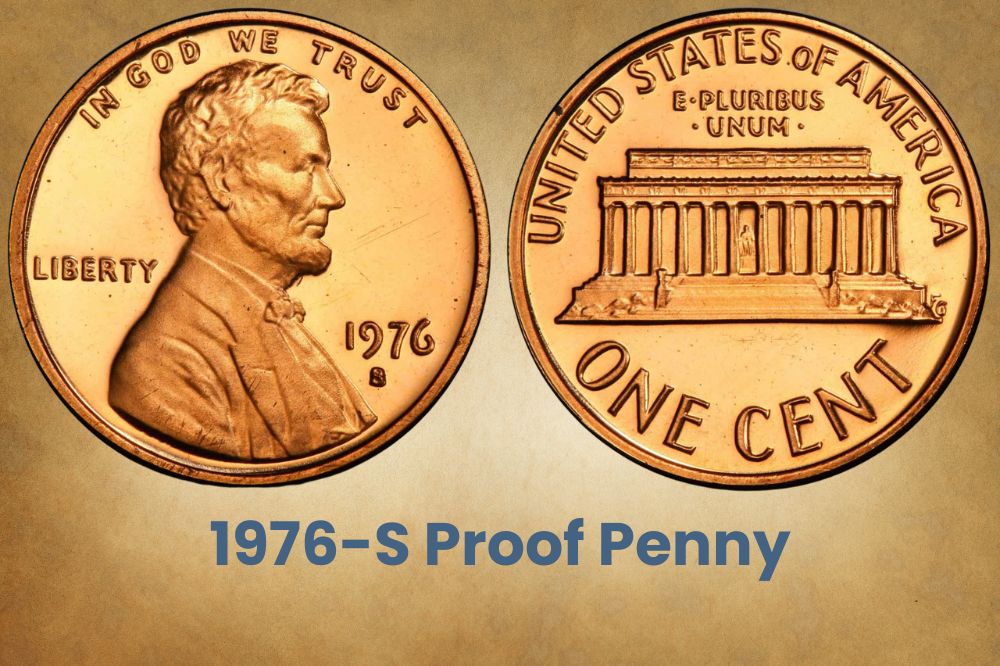
The San Francisco Mint coined 4,149,730 pennies in 1976. It was the lowest mintage of the bunch, and the S-Pennies were all proofs since San Francisco stopped making circulation coins in 1974. A PR 69 RD D-CAM sold for a measly $62 in 2022, but was $1,208 in 2002.
1976-D Penny Value
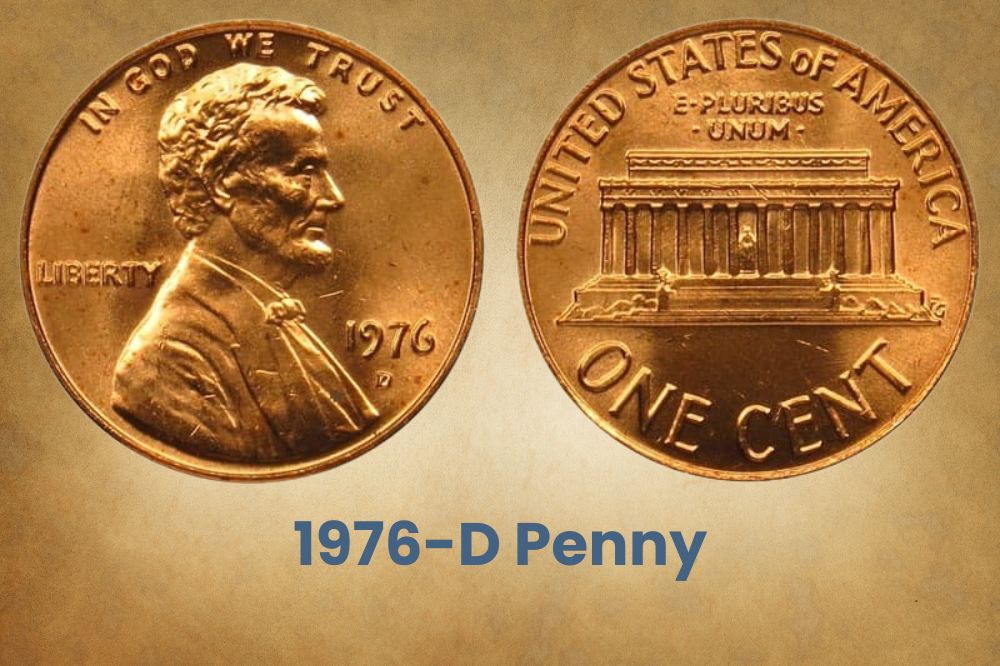
1976 saw 4,221,592,455 pennies minted in Denver. One 1976-D Penny in MS 67 RD only sold for $384, which is still a lot for a coin with a face value of 1 cent. But in the past, a 1976-D MS 67 RD sold for exactly $998.75 at auction in 2016. Error coins go for decent amounts too.
Related Posts: 16 Most Valuable Wheat Penny Errors
1976 Penny Errors
Coin errors can range from overlapping images to missing dates, and each one can add to the resale price of a coin. Some add a few cents while others shoot up the listing by thousands of dollars. Let’s evaluate a few common errors on the 1976 Penny, and learn how to spot them.
1976 Penny Thin Planchet Error
As we said before, coins are minted on blank discs called planchets which are punched off planchet sheets. So if a coin is stamped on the wrong blank, it may have a different diameter and weight. This 1976-D Penny was coined on a thin planchet so it only weighed 1.69g while a genuine 1976 penny should weigh 3.11g. In MS 60 BN, this skinny error coin sold for $25.
1976 Penny DBL Struck Error
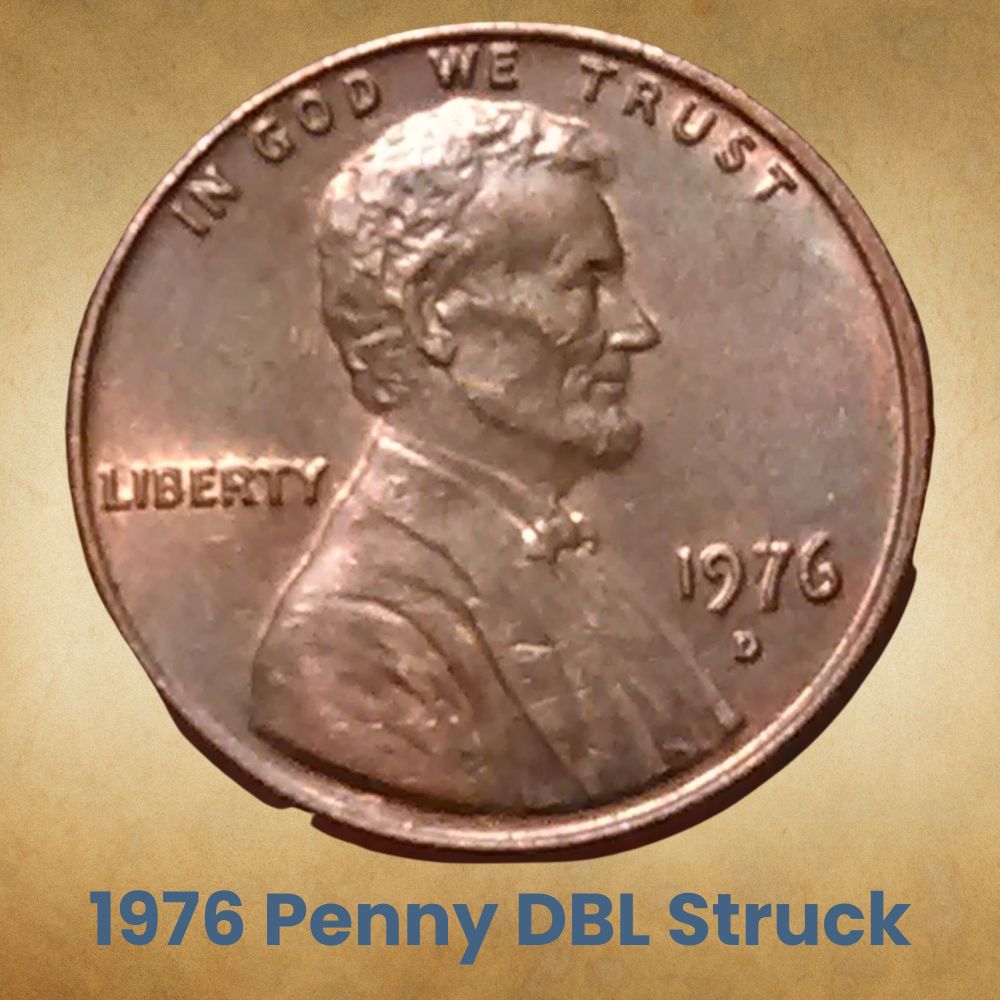
Typically, a coin is struck multiple times with the same die to make sure all the details imprint correctly. But sometimes, the planchet shifts between strikes, causing a double-struck error or DBL. In this case, the second strike created an extra portion of the coin that hangs off to the side. In a high grade of MS 64 RD, this double-struck penny sold for $145.
1976 Penny 60% Off-Centre Error
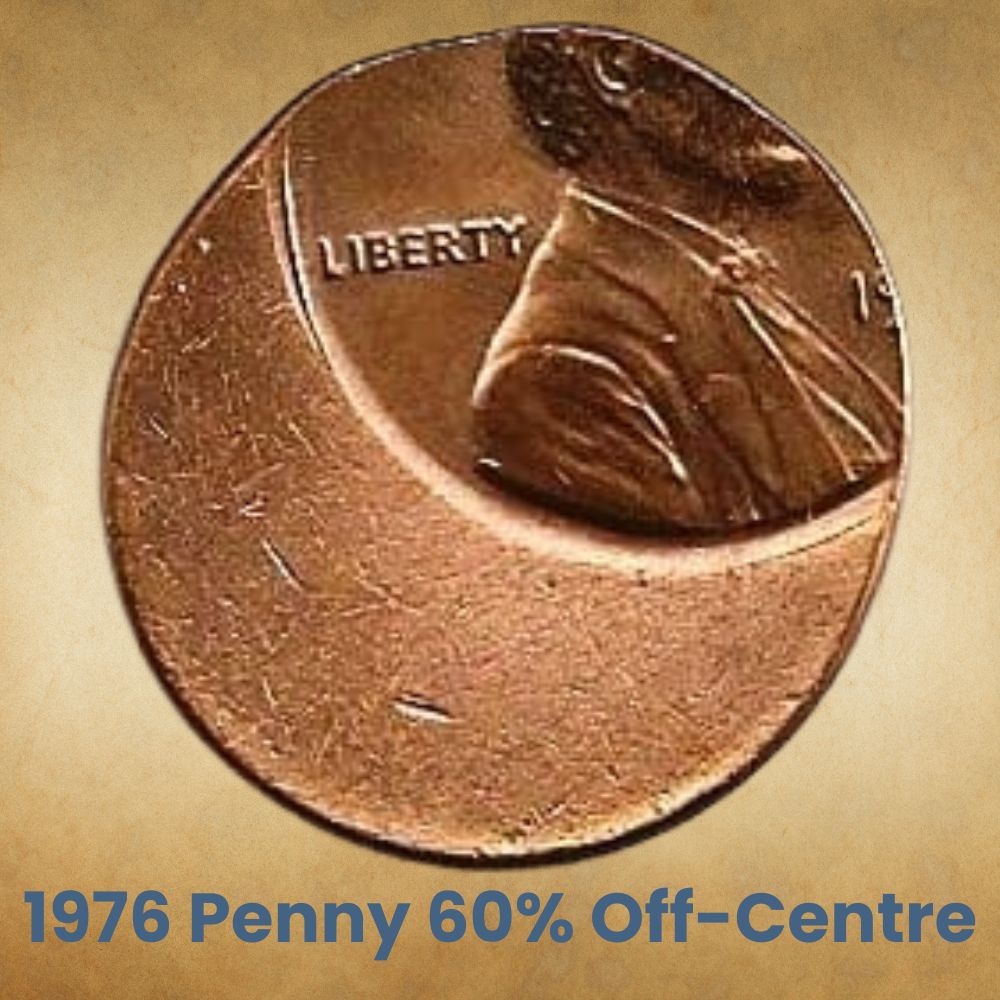
The process of minting coins starts with a master hub, which makes a master die, which makes a working hub, and that makes a working die. These working dies are used to mint coins. If the planchet moves while the die is striking, it may create an off-center error. If the deformed section has imprints, the coin sells for $40, but a blank surface is worth about $60.
1976 Penny Obverse Die Break Error
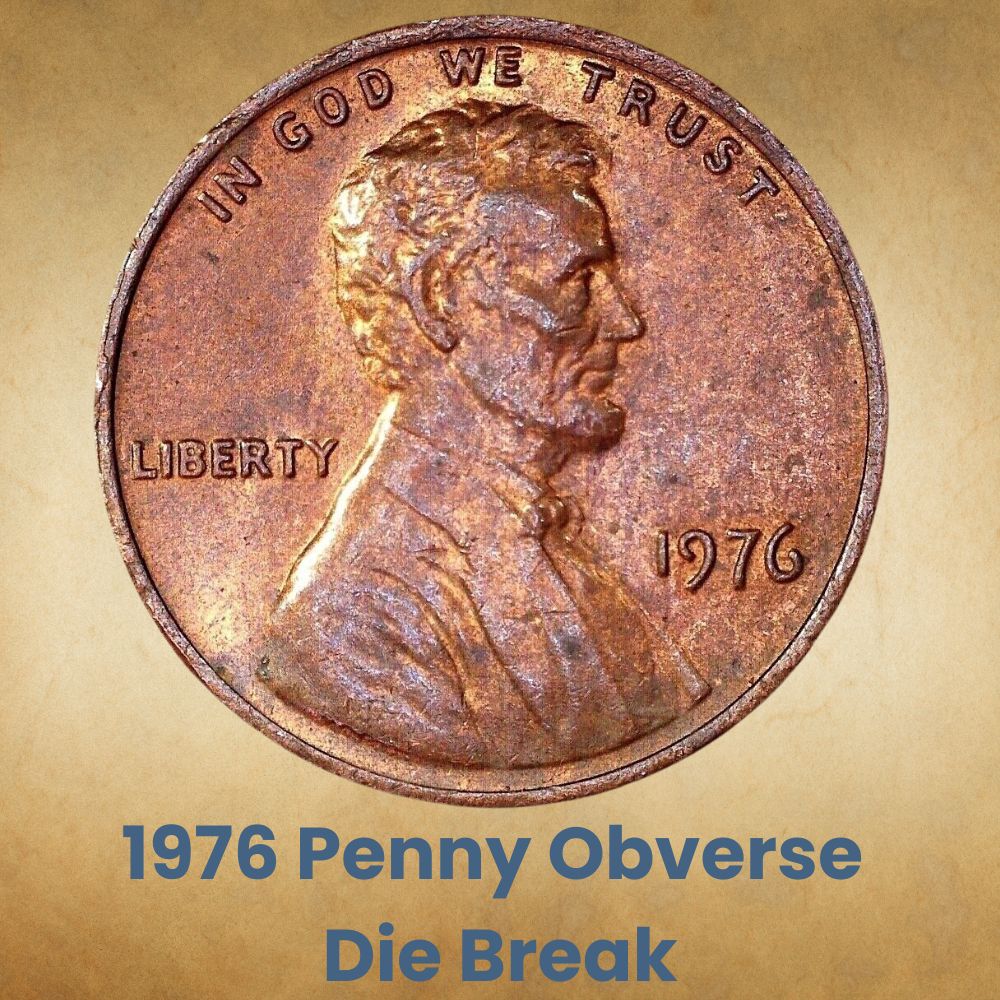
As dies get older, they develop cracks and flaws that may transfer onto the coin. These are called die breaks or cud errors. This 1976 Penny Cud has part of Lincoln’s hairline chipped off, plus the partial legend ‘In God We Tr…’. Only the ‘UST’ part is visible. The back of the coin has a blurred denomination at the same spot. In MS 65 RB, this error is worth $100.
1976 Penny 50% Off-Centre Error
We’ve explained how off-center errors occur. If the planchet shifts during the first die strike, it might leave part of the coin blank. But if the coin moves during the second or third strike, the coin may end up with multiple images and legends. This is another example of a first-strike error, so half the coin’s surface is unmarked. In MS 63 RB, this error is worth $110.
1976 Penny 80% Off-Centre Error
The value of off-center errors depends on the percentage of displacement as well as the condition of the coin itself. And higher grades fetch better prices, even in error coins. So this 1976 Penny had an 80% blank space and an outward curve deformity. The damage is on both sides of this coin and sells for $185. An 85% off-center in MS 63 BN went for $230 in 2021.
1976 Penny Struck on a 10c Planchet
Pennies are copper-colored and measure 19.05mm across. But dimes have a silver tone and are 17.91mm in diameter. They’re sometimes silver and sometimes nickel-plated, depending on the year. Also, dimes have reeded edges while pennies are smooth. So it’s fairly easy to spot a penny struck on a dime. In MS 63, this 1976-D Penny Struck on a 10c sold for $390.
1976 Penny 25% Off-Centre Struck on a 10c Planchet
What happens if you combine two errors? This could double the premium of the coin, depending on its condition. So let’s look at a penny struck 25% off-center on a dime planchet. The lower quarter of the coin’s front and the upper quarter of its back are blank. It weighs 2.3g instead of 3.11g, another tell-tale sign. One MS 65 penny sold for $1,350 in 2018.
1976 Penny Struck on a Clad Nickel Planchet
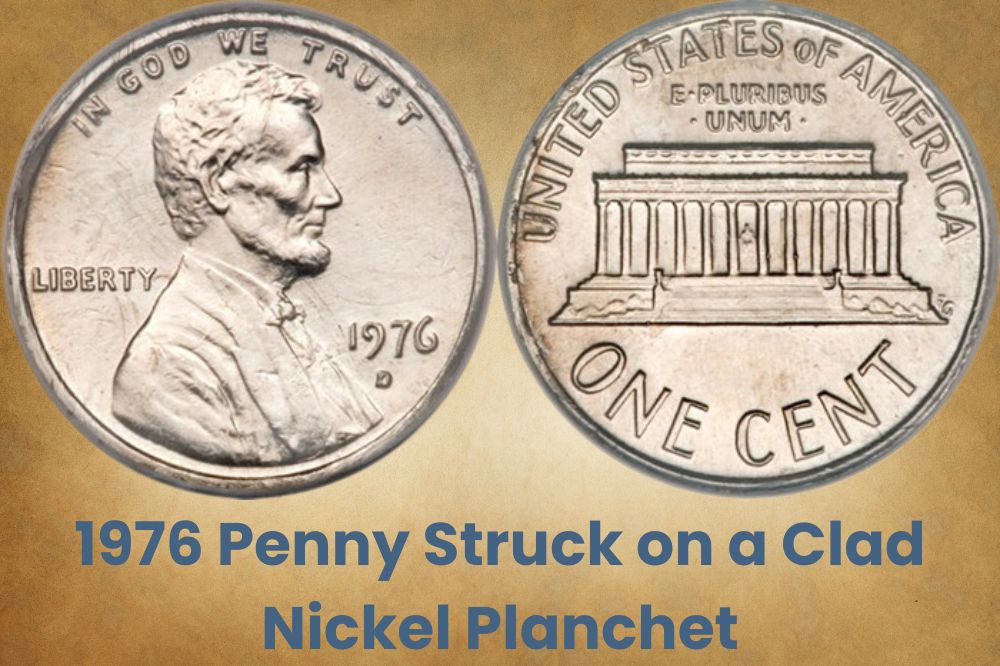
War Nickels (1942 to 1945) had a silver content of 35% while all other nickels were 75% copper with a 25% nickel coating. So a penny struck on a cupronickel planchet would be an interesting error to collect. And because the coins have different diameters – 19.05mm for pennies and 21.21mm for nickels, edge damage is expected. This error coin sold for $1,265.
1976 Penny Double Die Errors
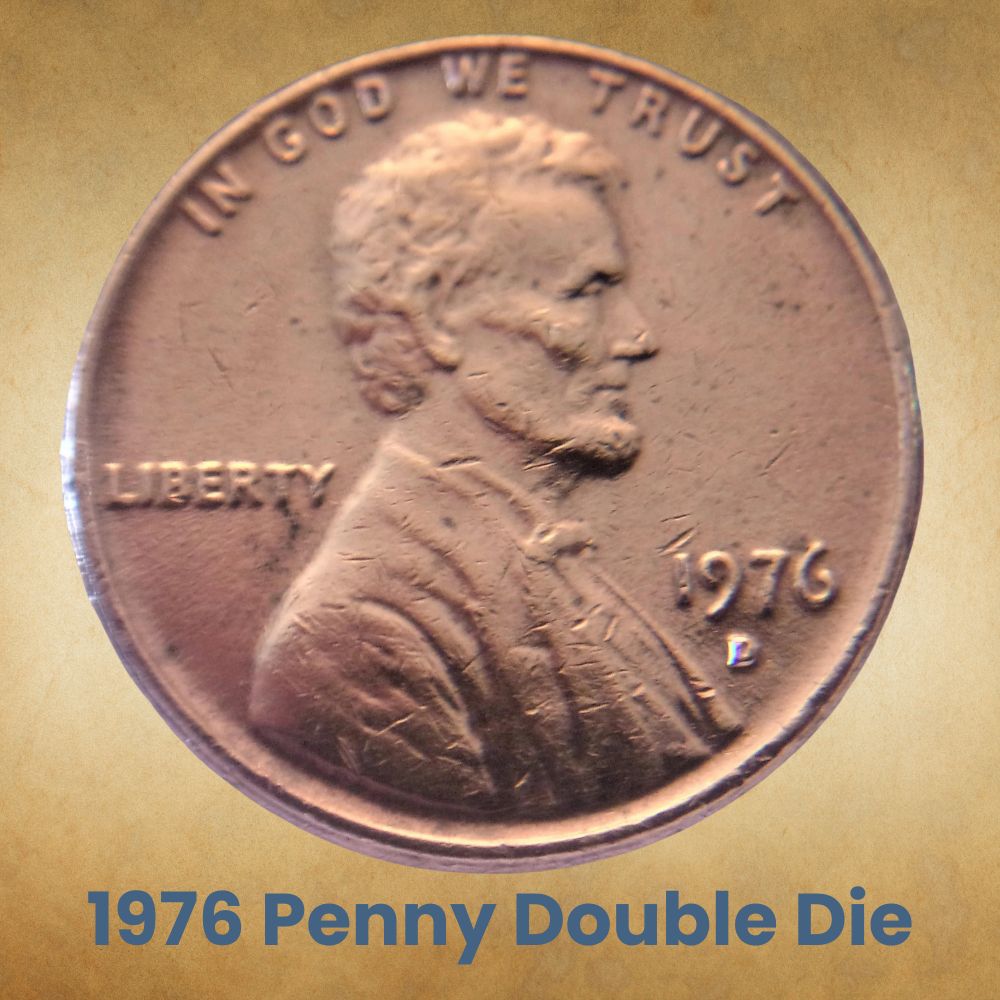
We’ve talked about the relationship between dies, hubs, and coins. And if any die moves while the hub is striking it, you may end up with doubling or tripling that will transfer onto all coins minted with that die, creating an error variety. DDOs (obverse) and DDRs (reverse) are clearest on the lettering and numbering but are rarely worth much on pennies. $20 tops.
1976 RPM Error
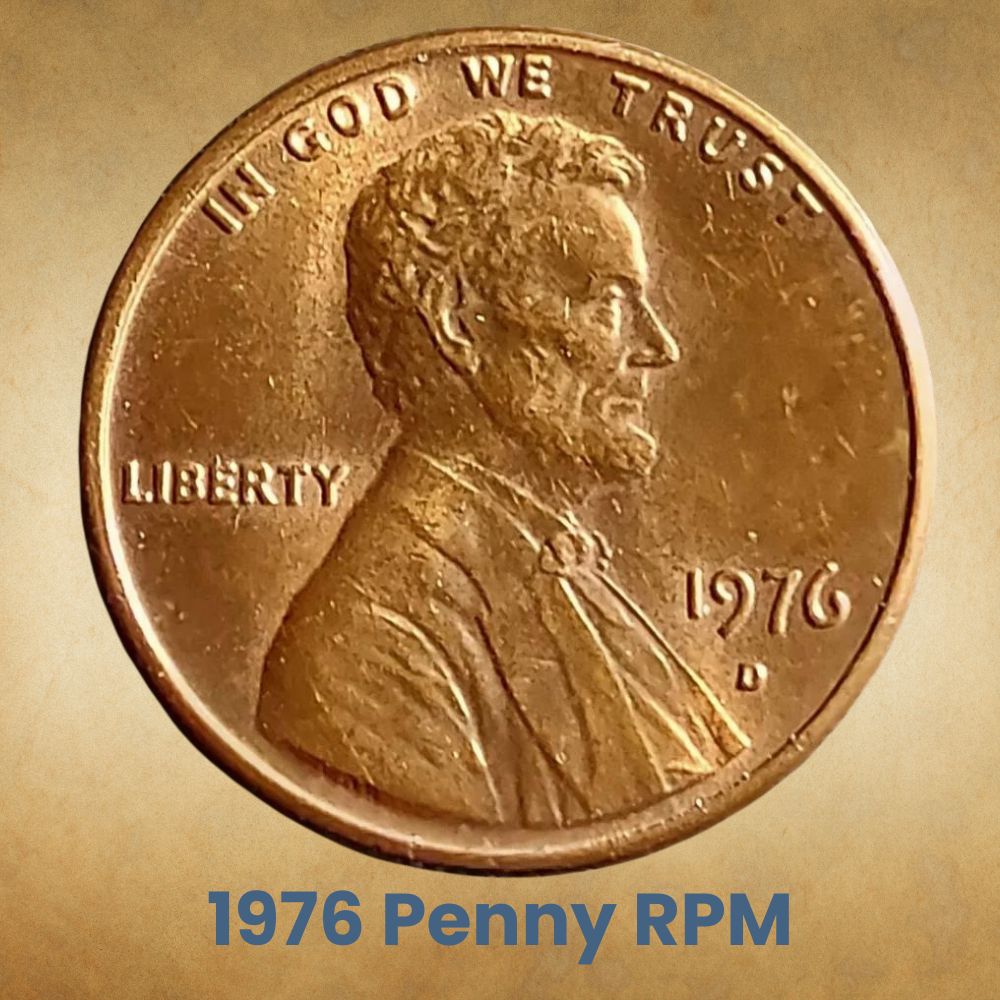
While the devices, legends, and dates are machined onto coins, mint marks were punched by hand, at least until 1989. So RPM errors – re-punched mint marks – might stamp a D on top of another D, or a D on top of an S. You can often see the earlier punch mark peeking out underneath. On 1976 Pennies, RPMs aren’t that valuable. They might be worth $12 in MS 65.
Related Posts: 19 Most Valuable Lincoln Memorial Penny Worth Money
History of the 1976 Penny
The Lincoln Penny, sometimes called the Lincoln Cent, was introduced in 1909 to celebrate 100 years since Abraham Lincoln was born. The genesis of the coin was that the sitting president, Theodore Roosevelt, wanted coins that weren’t just functional. He wanted American coins to have artistic merit, so he asked the mint to hire professional sculptors.
Before this, Mint Engravers designed coins, so they naturally clashed with these incoming artists that had usurped them. First on the job was Augustus Saint-Gaudens in 1905, but he died of cancer a few years later. He was succeeded by his assistants, including Victor David Brenner who reworked the penny, and James Earle Fraser who developed Buffalo Nickels.
The penny went through multiple reverse designs including Wheat Sheaves (1909 to 1958) and the Union Shield (2010 to date). In 1976, the Lincoln Memorial graced the back of the coin. It wasn’t an especially memorable year for the penny, but collectors were gathering bicentennial quarters, half-dollars, and dollars, so the cent piggy-backed on public interest.
The coin section of the San Francisco Mint was shut down between 1955 and 1968, though they still released small volumes of coins without the S Mint Mark. Then in 1974, the San Francisco Mint officially stopped making coins for circulation. Instead, they focused on making proof coins for collectors and archiving purposes. West Point covered the shortfall.
West Point and San Francisco Pennies
That same year (1974), West Point minted coins for the first time. As far as pennies go, West Point coined them every year from 1974 to 1986. But because these (W) coins had no mint marks, the public couldn’t tell which coins were from Philadelphia and which ones were from the West Point Mint. The only year when West Point Pennies had W mint marks was 2019.
So in essence, West Point coined pennies in 1974 through 1986 and then in 2019, with no West Point pennies produced in the interim. But since the public couldn’t distinguish West Point Pennies from Philadelphia ones, you won’t see much written about (W) pennies. They just get lumped with (P) pennies except in the official mintage records from the US Treasury.
Meanwhile, the San Francisco Proof Pennies were made on pre-burnished planchets (aka coin blanks) with specially treated dies. This process means the first 50 to 100 coins have a mirror-like field (i.e. the background) and a frosted device (i.e. the portrait). After 100 or so uses, the dies start to fade and the contrast between the field and the device gets less distinct.
This fact means the best proof coins are graded as Deep Cameo (D-CAM) by PCGS or Ultra Cameo by NGC. If the contrast is slightly reduced but the coins are still shiny, they’re graded as cameo or CAM by both evaluating firms. Another slight difference between the two coin appraisers is that NGC demarcates proof coins as PF while PCGS grades proof coins as PR.
Related Posts: 19 Most Valuable Wheat Penny Worth Money
how to identify 1976 Penny
The 1976 Penny is a Memorial Penny, so it has a sculpture of the Lincoln Memorial. The Memorial first appeared on the coin in 1959 to celebrate Lincoln’s sesquicentennial, the 150th anniversary of his birth. 1976 coins attracted interest because of the American Bicentennial.
The Obverse of the 1976 Penny
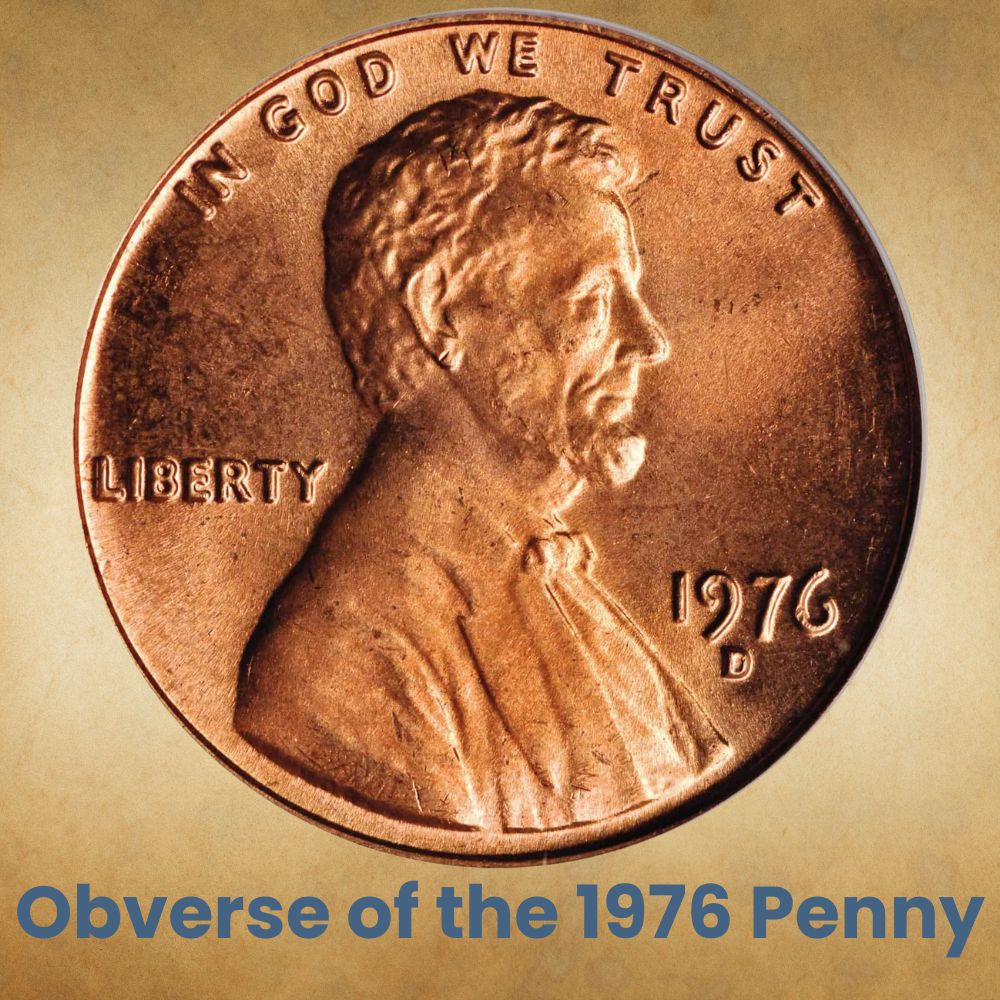
The obverse (heads side) of the 1976 Penny has a portrait of Abraham Lincoln. He’s facing right in the portrait and has a tiny VDB stamped at the cut-off point on his shoulder. Above his head is the legend In God We Trust. The legend Liberty is behind him, while the mint year and mint mark are in front of him, with the mint mark placed right below the mint date.
The Reverse of the 1976 Penny
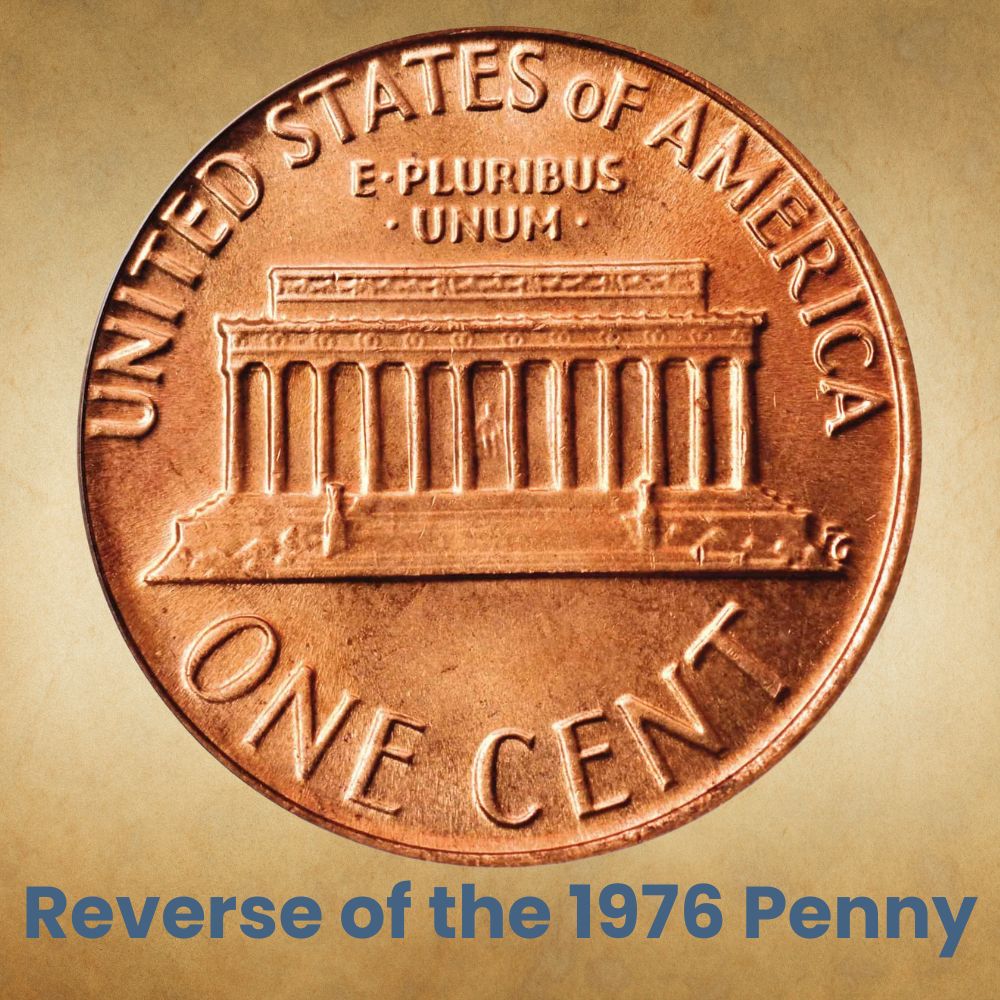
The reverse (tails side) of the 1976 Penny portrays the Lincoln Memorial as designed by Frank Gasparro. His initials – FG – appear on the right of the building. The top of the coin reads United States of America, with E Pluribus Unum directly under it. The bottom of the coin reads One Cent. If the coin is well preserved, you can spot Lincoln’s statue at the back.
Other Features of the 1976 Penny
The 1976 Penny is 95% copper and 5% zinc since all the tin in the coin was removed in 1963. This penny weighs 3.11g and is 19.05mm (0.75”) in diameter. It’s a tiny red-tinged coin with a plain edge that has no reeds. Because Lincoln Cents have so many variants, you should pay special attention to the color and weight of the coin. It’s the quickest way to identify errors.
FAQs About the 1976 Penny
Are Any 1976 Pennies Worth Money?
More than 8B pennies were coined in 1976 so they’re not especially rare. Even in high mint states, the coins are only worth 20 to 30 cents based on the melt value of copper. In MS 68, the highest grade verified to date, the penny is worth about $3,700. But error coins sell well.
How Much is a Penny Worth 1976?
So far, the most valuable 1976 Penny was a 1976 No Mint Mark in MS 68. It could be from West Point (W) or Philadelphia (P) since both mints lacked mint marks that year. Back in 2014, a 1976 MS 68 RD sold for close to $8,000. The exact figure was $7,931.25. But the best price for the coin as of November 2022 is roughly $3,700 for an error-free Lincoln Cent.

I have a 1976 Lincoln penny, uncirculated, no mint mark. Has Liberty Bell on left at back of Lincoln’s head and USA on right in front of his face.
Probably a novelty coin. Souvenir stores and machines you put money into would stamp a penny with those symbols for you.
Google Bicentennial Penny..